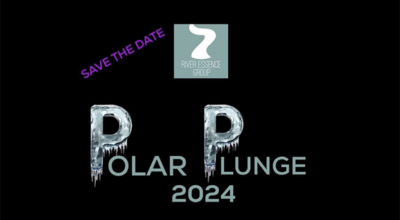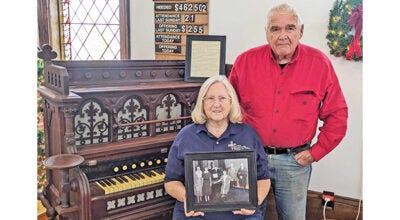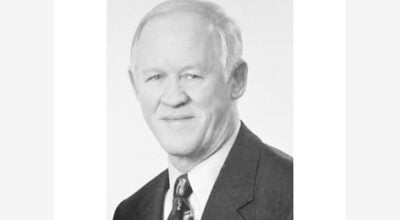Dave Carlock: Processing life makes us who we are
Published 8:00 am Saturday, February 2, 2013
A Day in the Life
I believe that under it all, we humans are intrinsically optimistic. It’s what we do to process that optimism that makes us who we are.
At the extremes, one can either be an easy-to-mock Pollyanna or a wrench-in-the-spokes, cynical George Carlin-type who hides that innate optimism behind the thick walls created from previous disappointments.
Though I tend to lean toward the positive as a creative type, when it comes to computer-based recording technology — I’m a die-hard cynic. Living on the front lines of music technology for 26 years taught me this.
As a teen, I started performing music as a one-man show, prerecording my backing tracks using MIDI sequencers and playing other instruments live. This era of technology tended to deliver on its promises because the equipment was specific and limited in its design and because it was, well, expensive. The 24-track analog tape recorders were how records were made in 1981 and were highly reliable machines with a mid five-digit price tag. If you needed more tracks, you used other machine technology to make multiple 24-tracks run in sync. Putting together a great 48-track room could easily cost half a million dollars, plus.
By 1991, the movement to record audio direct to computer hard disks began to gain steam with the introduction of Digidesign’s Pro Tools 1.0. With machine logic cards installed into a personal computer’s card slots, a whopping four tracks of audio were offered in a humble but hopeful beginning. There were inklings that, someday, recording and mixing all “inside-the-box” could be a possibility, but, at that time, Pro Tools was more of a contender to eventually pose a threat to the tape machine, only one part of the workflow.
Competing systems
Other systems competed, but not particularly well, and, by 2002, the fully realized Pro Tools HD system was released and allowed users to completely record and mix in-the-box with sample rates up to 192K, 128-track capability and a scalable number of audio ins and outs purchased in eight-channel increments. At that point, producers could stop using tape altogether if they desired and still end up with an audio quality that was subjectively competitive to analog recording, with strengths and weaknesses on both sides.
Costly equipment
Pro Tools’ only real weakness was the cost, but, on the flipside, when you paid the money, it actually worked like a reliable machine as opposed to a glitchy computer. This reliability made a fully loaded Pro Tools HD system the Microsoft Word of the music industry with a price tag of $35,000 and up, making an incredible pro studio possible for a fraction of the cost of (two) 24-track tape machines, large format mixing consoles and outboard gear.
So what, you ask, has music technology brought us over the past decade? Basically a whole lotta protocol splintering, confusion and reduced productivity for artists. Part of what holds us all together as we participate with technology is a common “language,” such as my previous example, Microsoft Word. I think most everyone works with Microsoft Word by now and that commonality allows us to more easily collaborate. For hard disk-based audio recording, Pro Tools has provided a shared protocol and collaboration while also delivering an increasingly high standard of quality over its development.
But then, along came a technology called “Native Recording,” which got a lot of attention for really only one reason — a dramatically lower price tag than the 20-year developed Pro Tools systems. No one’s ever claimed it was better, because it’s not even close. I’ve been leery of the highly subjective claims that Native systems “work.” What does that mean to an individual anyway? Native systems dramatically cut costs by eliminating the rock solid machine logic cards from their design and then focusing all of the system’s processing tasks solely on the computer’s built-in resources: CPU speed, RAM and the Firewire bus.
A sea of musicians and amateur recording enthusiasts, famous for their lean toward George Carlin’s personality, have suddenly become Pollyannas, embracing Native systems in increasing numbers due to decreasing dollars. Grateful to have anything that fits their budget, bedroom studios now espouse how incredible their pet systems are. And despite my pointed criticism, I’m happy that these tech-savvy musicians have been able to “get their geek on” and make music at their own pace, in their own way.
New demands
But professional recording demands are different. There are time deadlines. There is a need to move quickly when you have a room full of musicians.
There is a need to be highly productive if you’re working with an artist who has a limited window of focus. There is a need to keep things simple and predictable for a creative artist, especially if they want to buy a system they intend to use alone while trying to stay in a creative headspace. There is a need for the system to work now if someone is flown into town to collaborate, period.
Latency is alive and well and, while there are workarounds, slaying that dragon exposes Native’s other problems which require constant monitoring and thought. That’s why Pro Tools HD systems have remained the leader in professional work. Tech is supposed to be the “behind the scenes” in the creative process of music making, not a constant distraction. That makes purchasing a Native system a case of pennywise and pound foolish.
FIND A WAY, MY FRIENDS
Dave Carlock is a 26-year veteran of the entertainment business whose work as a recording engineer and producer, touring musician, and songwriter made him Googleable. His continuing work as an Independent Content Creator of Sound and Image has earned him a Grammy Award certificate, two Platinum Record Awards, and a Paragon Award in advertising. Currently, he brings national and international artists to make records and music videos at his production studio in the Benton Harbor Arts District. www.davecarlock.com





